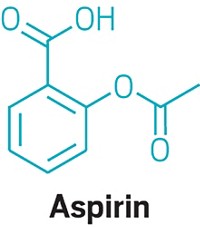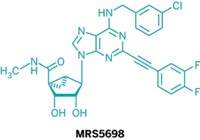Advertisement
Grab your lab coat. Let's get started
Welcome!
Welcome!
Create an account below to get 6 C&EN articles per month, receive newsletters and more - all free.
It seems this is your first time logging in online. Please enter the following information to continue.
As an ACS member you automatically get access to this site. All we need is few more details to create your reading experience.
Not you? Sign in with a different account.
Not you? Sign in with a different account.
ERROR 1
ERROR 1
ERROR 2
ERROR 2
ERROR 2
ERROR 2
ERROR 2
Password and Confirm password must match.
If you have an ACS member number, please enter it here so we can link this account to your membership. (optional)
ERROR 2
ACS values your privacy. By submitting your information, you are gaining access to C&EN and subscribing to our weekly newsletter. We use the information you provide to make your reading experience better, and we will never sell your data to third party members.
Environment
‘Pathway preferential’ estrogens target the good and avoid the bad
New analogs selectively act on a beneficial biochemical pathway, providing a safer option for estrogen replacement therapy
by Stephen K. Ritter
May 30, 2016
| A version of this story appeared in
Volume 94, Issue 22
For postmenopausal women or for women who have had surgery to remove their ovaries, estrogen replacement therapy can help smooth out hot flashes, depression, weight gain, and other side effects stemming from abnormal hormone levels. But taking an estrogen supplement doesn’t come without side effects, such as increased risk of breast and uterine cancer. Researchers led by Benita S. Katzenellenbogen and John A. Katzenellenbogen of the University of Illinois, Urbana-Champaign, have a possible solution with a set of “pathway preferential” estrogen analogs they have developed (Sci. Signal. 2016, DOI: 10.1126/scisignal.aad8170). When estrogens bind to estrogen receptors, they trigger a set of biochemical pathways. The extranuclear signaling pathway, which involves a transient estrogen binding process, helps control metabolism in adipose tissue and in the liver to reduce fat accumulation and repair blood vessels. The nuclear signaling pathway, which requires sustained estrogen binding, stimulates activity in reproductive and breast tissue, including the proliferation of cancer cells. The Katzenellenbogens and their team designed estrogen analogs, such as PaPE-1 (shown), that preserve the essential chemical features of estrogens but reduce estrogen receptor binding affinity. Working with mice, the researchers found that the analogs trigger the extranuclear pathway but don’t bind strongly enough to sustain the nuclear pathway, providing potentially trouble-free options for hormone replacement therapy.





Join the conversation
Contact the reporter
Submit a Letter to the Editor for publication
Engage with us on Twitter